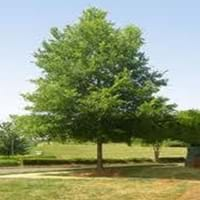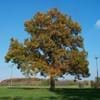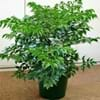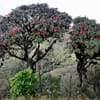Life Span
Perennial
Perennial
Origin
North America, United States, Northeastern United States, Mid-Atlantic United States, Southeastern United States, Central United States, South-Central United States, Texas
Asia, Europe, North America
Types
Not Available
Black Ash, Blue Ash, California Ash, Carolina Ash, European Ash
Number of Varieties
Not Available
Habitat
Hot climate regions, low mountains, Tropical regions
Forest edges, Hillside, Woods
USDA Hardiness Zone
6-9
3-9
Sunset Zone
2a, 2b, 3a, 3b, 4, 6, 7, 8, 9, 10, 11, 12, 13, 14, 15, 16, 18, 19, 20, 21
9, 12, 13, 14, 15, 16, 17, 18, 19, 20, 21, 22, 23, 24
Habit
Oval or Rounded
Oval or Rounded
Flower Color
Red, Light Green, Chartreuse
White
Flower Color Modifier
Bicolor
Not Available
Fruit Color
Tan, Chocolate
Not Available
Leaf Color in Spring
Green, Light Green
Dark Green
Leaf Color in Summer
Green, Dark Green
Dark Green
Leaf Color in Fall
Yellow, Orange, Sandy Brown
Dark Green
Leaf Color in Winter
Not Available
Dark Green
Leaf Shape
Irregular
Oblovate
Plant Season
Spring, Fall
All year
Sunlight
Full Sun, Partial Sun
Full Sun, Part sun
Type of Soil
Clay, Loam, Sand
Loamy, Sandy
The pH of Soil
Acidic, Neutral, Alkaline
Acidic
Soil Drainage
Average
Well drained
Bloom Time
Spring, Late Spring
Late Spring, Spring
Tolerances
Wet Site, Pollution, Soil Compaction
Drought, Pollution, Soil Compaction
Where to Plant?
Ground
Ground
How to Plant?
Grafting, Seedlings
Grafting, Seedlings, Stem Planting, Transplanting
Plant Maintenance
Low
Medium
Watering Requirements
Allow to dry out slightly between watering, Does not require lot of watering
Does not require lot of watering, Medium, Prefer drip-irrigation instead of Over-head watering
In Summer
Lots of watering
Lots of watering
In Spring
Moderate
Moderate
In Winter
Average Water
Average Water
Soil pH
Acidic, Neutral, Alkaline
Acidic
Soil Type
Clay, Loam, Sand
Loamy, Sandy
Soil Drainage Capacity
Average
Well drained
Sun Exposure
Full Sun, Partial Sun
Full Sun, Part sun
Pruning
cut main flower spike, Prune every year, Remove damaged leaves, Remove dead branches, Remove dead leaves
Prune in winter, Prune prior to new growth
Fertilizers
All-Purpose Liquid Fertilizer, Bonemeal, fertilize in growing season
All-Purpose Liquid Fertilizer
Pests and Diseases
Azalea leaf gall, Fusarium leaf spot, Leaf rust, Mildew
Bark splits, Crown gall, Epicormic Sprouting, Woodpecker feeding
Plant Tolerance
Heat Tolerance, Humidity, Salt and Soil Compaction
Drought
Flowers
Insignificant
Yes
Flower Petal Number
Not Available
Single
Foliage Texture
Fine
Medium
Foliage Sheen
Glossy
Glossy
Allergy
Eczema, Rhinitis, Runny nose
Not Available
Aesthetic Uses
Landscape Designing, Showy Purposes
Not Used For Aesthetic Purpose
Beauty Benefits
Blood purifying, Reduce Bruises, Weightloss
Not Available
Edible Uses
Sometimes
Yes
Environmental Uses
Air purification
Air purification
Medicinal Uses
Gout, Obesity, Snoring
Fever, Liver problems
Part of Plant Used
Bark, Stem
Leaves, Stem
Other Uses
Animal Feed, Biodiesel, Recovering internal injuries
Used as Ornamental plant
Used As Indoor Plant
No
No
Used As Outdoor Plant
Yes
Yes
Garden Design
Shade Trees, Street Trees
Shady Tree, Showy Tree
Botanical Name
QUERCUS phellos
Fraxinus
Common Name
Willow Oak
Ash Tree
In Hindi
Overcup ओक
राख पेड़
In German
Overcup Oak
Esche
In French
Overcup Oak
Frêne
In Spanish
Overcup Roble
Fresno
In Greek
Overcup Oak
δέντρο Ash
In Portuguese
Overcup Oak
Freixo
In Polish
Overcup Dąb
Jesion
Phylum
Not Available
Anthophyta
Class
Magnoliopsida
Magnoliopsida
Clade
Angiosperms, Eudicots, Rosids
Angiosperms, Asterids, Eudicots
Tribe
Not Available
Oleeae
Subfamily
Amaryllidoideae
Not Available
Number of Species
Not Available
Importance of Willow Oak and Ash Tree
Want to have the most appropriate plant for your garden? You might want to know the importance of Willow Oak and Ash Tree. Basically, these two plants vary in many aspects. Compare Willow Oak and Ash Tree as they differ in many characteristics such as their life, care, benefits, facts, etc. Every gardener must at least have the slightest clue about the plants he wants to plant in his garden. Compare their benefits, which differ in many ways like facts and uses. The medicinal use of Willow Oak is Gout, Obesity and Snoring whereas of Ash Tree is Fever and Liver problems. Willow Oak has beauty benefits as follows: Blood purifying, Reduce Bruises and Weightloss while Ash Tree has beauty benefits as follows: Blood purifying, Reduce Bruises and Weightloss.
Compare Facts of Willow Oak vs Ash Tree
How to choose the best garden plant for your garden depending upon its facts? Here garden plant comparison will help you to solve this query. Compare the facts of Willow Oak vs Ash Tree and know which one to choose. As garden plants have benefits and other uses, allergy is also a major drawback of plants for some people. Allergic reactions of Willow Oak are Eczema, Rhinitis and Runny nose whereas of Ash Tree have Not Available respectively. Having a fruit bearing plant in your garden can be a plus point of your garden. Willow Oak has showy fruits and Ash Tree has no showy fruits. Also Willow Oak is not flowering and Ash Tree is flowering. You can compare Willow Oak and Ash Tree facts and facts of other plants too.





